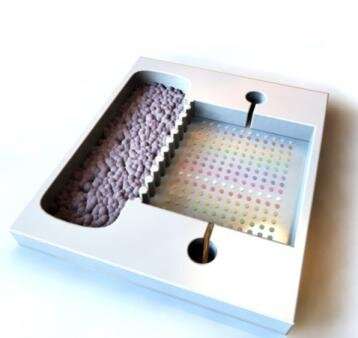Decoding cells to unlock stem cells' potential

Stem cells are jacks of all trades, capable of alleviating the consequences of such diverse pathologies as heart attacks, strokes and cancer. However, stem cell therapies have been hampered by possible side effects, which are frequently hard to predict. One way around this conundrum is to understand how stem cells conjure up their therapeutic effects, and then try to mimic them.
In a new study, Yale researchers succeeded in doing so, opening the door to new stem cell-inspired, cell-free treatments for the effects of a heart attack.
The key was to decipher the stem cell language, encoded by the various chemicals secreted by the cells. Led by the lab of Andre Levchenko, the John C. Malone Professor of Biomedical Engineering at Yale, a study published by the Proceedings of the National Academy of Sciences (PNAS) this week examined for the first time the dynamics of stem cell secretions in response to different stresses. Using a combination of microfluidics developed at Levchenko's lab and computer modeling, researchers created a platform to record the dynamic cocktail of stem cell secretions in depth, decoding the precise ways in which the words and messages of these cells are arranged as they provide a life-line to damaged heart cells. This analysis was revealing of the larger world of cell communication in our bodies.
"Cells communicate in different ways, including using molecules they secrete," said Levchenko, director of the Yale Systems Biology Institute at Yale's West Campus. "We suspected that the dynamics of secretion was a big part of the puzzle and were looking to find a simple way to understand it. The results were striking, particularly when we examined the adult stem cells, known to actively interact with many other cell types."
Communication between cells is necessary to maintain most functions in the body and can also help the body properly respond to an external cue, such as an ailment or injury. Current technology only allows broad snapshots of these protein secretions.
"This is akin to detecting what words were spoken in a sentence, but not really knowing their placement, the inflection, and tone of the message," said Kshitiz, assistant professor of biomedical engineering at the University of Connecticut, and the paper's first author. "The current understanding of the language of communication between cells is therefore very limited and does not capture the complexity of messaging involved."
Cells, the researchers witnessed, are flexible enough to change their behavior depending on the injury present. The researchers discovered that stem cells only act as "Good Samaritans" when they see injured tissue.
In the study, funded by the American Heart Association and National Cancer Institute, Kshitiz, Levchenko and their colleagues then attempted to prepare the cocktail secreted by stem cells using synthetic compounds.
"The next step is to say 'Do we actually need the cells or can we take that cocktail or pay attention to how components of the cocktail may change over time and apply that to the damaged tissue?'" Levchenko said.
The synthetic cocktail turned out to be highly effective in saving the heart cells in the immediate aftermath of a heart attack-like condition. This allowed for the survival of cells that would otherwise have died and permanently weakened the heart tissue, and led to respiration of the cardiac function in animals. This result immediately suggests that it may be possible to create stem cell-inspired therapies that effectively target various ailments and lead the way to improved patient survival while eliminating the side effects caused by the stem cells themselves.
More information: Kshitiz, D., et al. Dynamic secretome of bone marrow-derived stromal cells reveals a cardioprotective biochemical cocktail, Proceedings of the National Academy of Sciences (2019). DOI: 10.1073/pnas.1902598116
Journal information: Proceedings of the National Academy of Sciences
Provided by Yale University

















